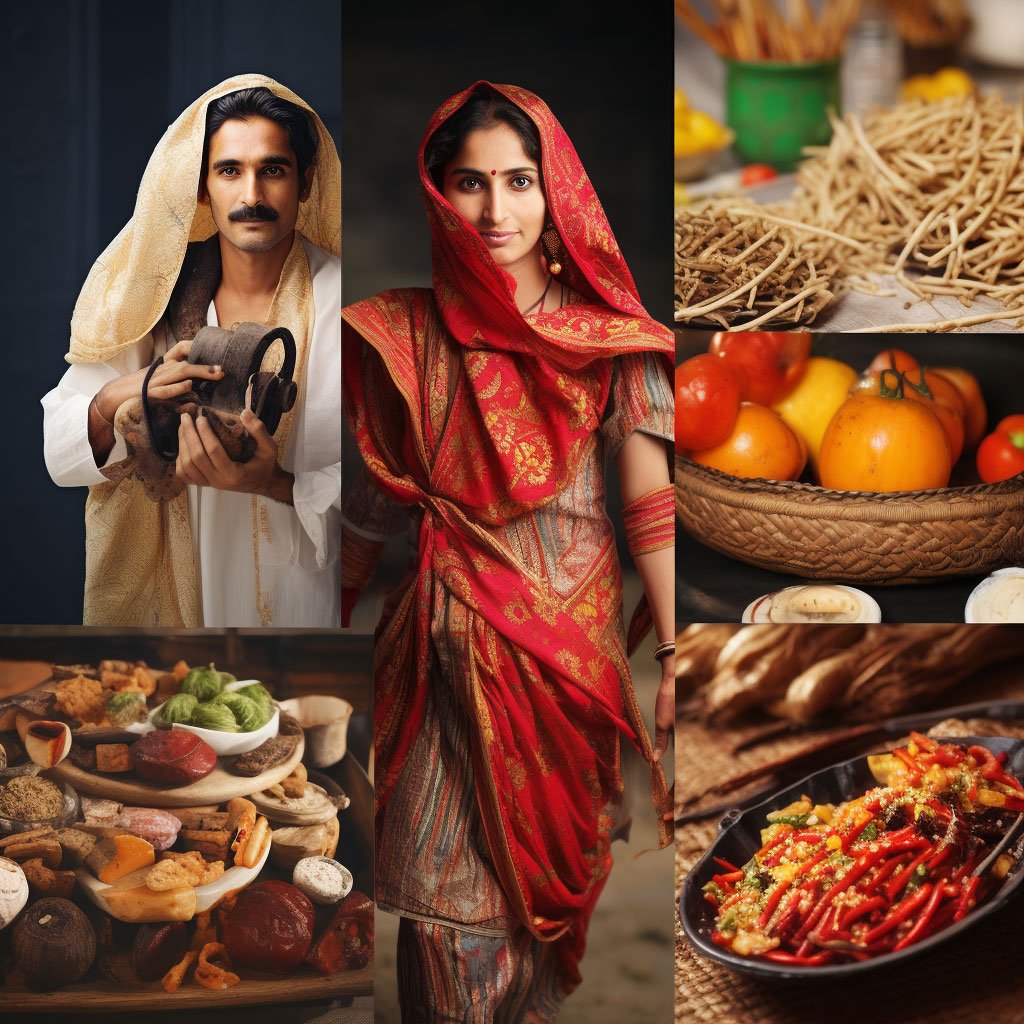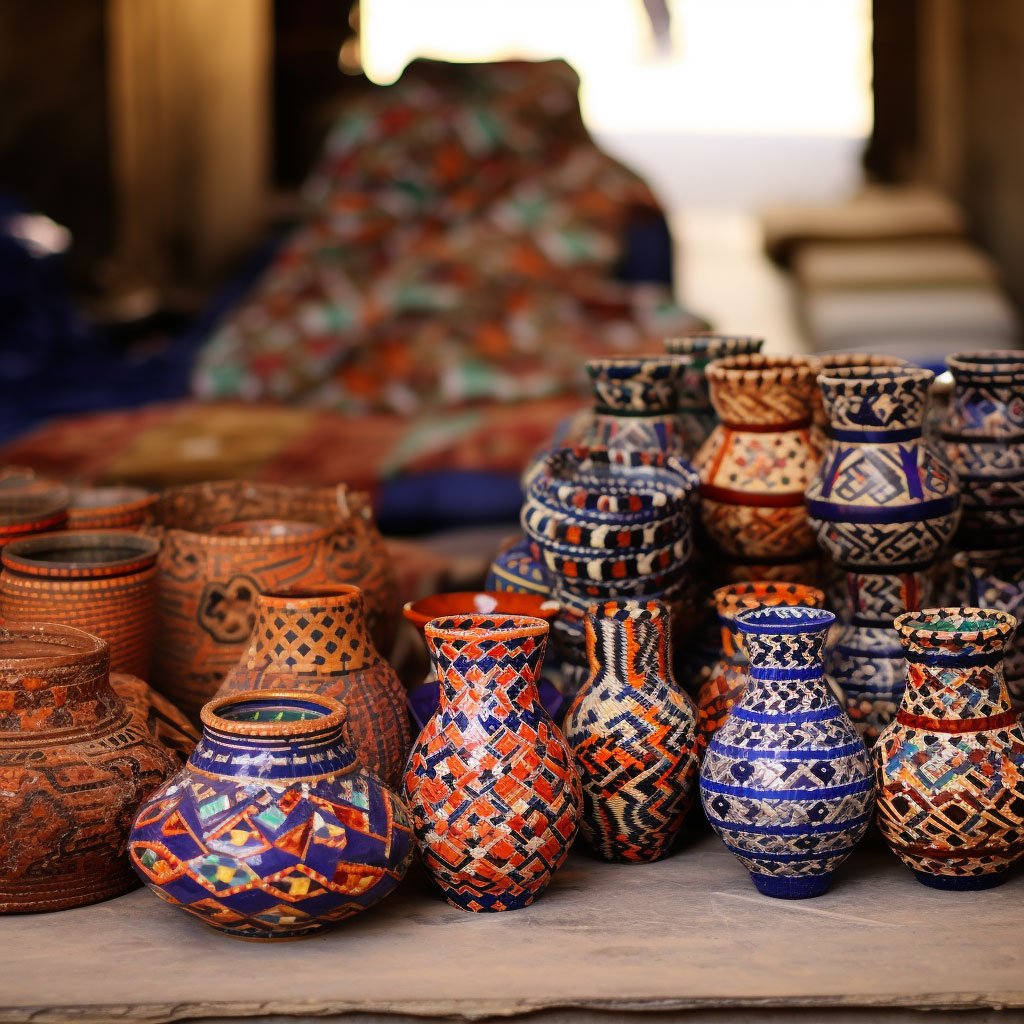Welcome to a deep dive into the rich and vibrant culture of Pakistan, a country that is a melting pot of diverse ethnic groups, traditions, and festivals. Weaving together strands of various cultural influences, Pakistani culture presents a kaleidoscope of colors, flavors, sights, and sounds that are deeply rooted in its history and societal fabric.

Ethnic Diversity
Pakistan’s cultural richness stems from its ethnic diversity. The country is home to numerous ethnic groups, each carrying its unique customs, languages, and traditions.
The Punjabis, known for their vivacious spirit, make up the largest ethnic group. Their culture is marked by lively music, energetic dances like Bhangra, and a cuisine famous for its rich flavors.

The Sindhis, hailing from the Sindh province, are known for their Sufi traditions and richly embellished Ajrak prints. The Sindhi language, one of the oldest in the world, adds another layer to their vibrant culture.
In the mountainous north, you find the hardy and hospitable Pathans or Pashtuns. Their culture, steeped in the code of Pashtunwali, emphasizes honor, hospitality, and courage.
The Baloch and the Saraikis in the southwest and south-central regions respectively, add their distinctive customs, handicrafts, and languages to Pakistan’s cultural mix.
Celebrating Basant
Basant, or the festival of kites, is a quintessential part of Punjabi culture, celebrated with much fanfare in the city of Lahore. This spring festival paints the sky with a myriad of colorful kites, marking the end of winter.

The day of Basant is filled with excitement and friendly competition, as people of all ages engage in kite-flying duels. The night comes alive with the twinkling of lanterns and beats of Punjabi dhol, as people continue their celebrations.
Eid Festivities
In the Islamic calendar, two Eids are celebrated every year – Eid-ul-Fitr and Eid-ul-Adha. Each of these festivals carries a unique religious significance and cultural celebration.
Eid-ul-Fitr marks the end of the holy month of Ramadan, a period of fasting, prayer, and reflection. The celebration begins with a special prayer at the mosque, followed by a festive meal – the first daytime meal in a month. It’s a time of joy and generosity, with people often giving to the people with low-income and sharing treats with neighbors.

Eid-ul-Adha, or the ‘Festival of Sacrifice’, commemorates Prophet Ibrahim’s willingness to sacrifice his son in obedience to God. The day is marked by the sacrifice of an animal, usually a goat or a sheep, with the meat distributed among family, friends, and the less fortunate. This Eid is a profound reminder of the values of sacrifice and empathy in Islamic tradition.
Cultural Tunes and Moves
Pakistani music and dance forms are a reflection of its cultural diversity. Qawwali, a form of Sufi devotional music, is globally recognized, thanks to artists like Nusrat Fateh Ali Khan. The Sindhis’ folk music and dance, which often carry Sufi influences, are a significant aspect of their culture.

Pashto music, with its Rabab instrument, is famous in the northern regions, while the Balochis’ folk music often speaks of love, war, and their tribal history. Bhangra and Luddi are popular Punjabi folk dances performed at festive events.
Nowruz: Welcoming the New Year
As winter retreats and spring blooms, the Persian New Year, Nowruz, is celebrated with grandeur, especially among the Parsi community and northern regions of Pakistan. This festival, symbolizing rebirth and renewal, marks the vernal equinox, typically falling around March 21.

In preparation for Nowruz, homes are thoroughly cleaned in a ritual known as ‘khaneh takani’ or ‘shaking the house’. A special table setting called ‘Haft Seen’, showcasing seven symbolic items starting with the Persian letter ‘S’, is arranged. These items include sprouts (sabzeh), dried fruit (senjed), garlic (sir), apples (sib), and others, each representing a different hope for the New Year.
The celebration continues for 13 days, filled with visits to family and friends, feasting on traditional food, and participating in outdoor activities.
Cultural Crafts
The cultural tapestry of Pakistan is incomplete without mentioning its traditional crafts. From the Sindhi Ajrak and Balochi embroidery to the Swati woodwork and Multani blue pottery, each region has its unique handicrafts that reflect their historical and cultural narratives.

Conclusion
Pakistan, with its plethora of ethnic groups, traditions, and festivals, offers a vibrant cultural landscape that tells a compelling story of its historical evolution and social dynamics. Whether it’s the lively Basant celebrations, the spiritual observance of Eid, the welcoming of spring with Nowruz, or the rich tapestry of ethnic traditions, each aspect provides a captivating insight into the cultural heart of Pakistan. It’s a beautiful confluence of traditions, values, and celebrations that echo the nation’s rich diversity.
Thanks for this post. So much Ididn’t know, but isn’t that true of most of us! And tyhanks for subscribing to my blog.